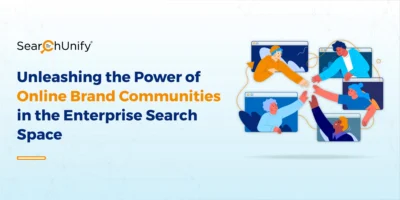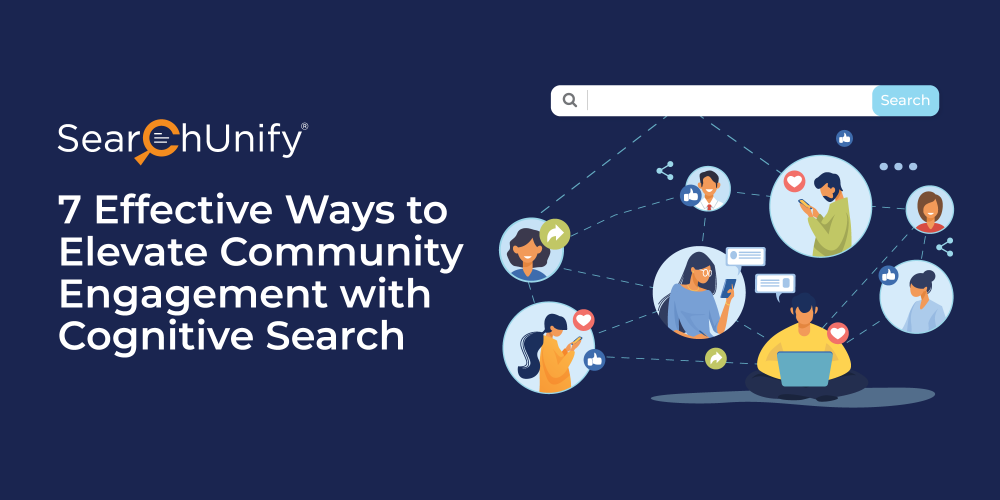
When you amalgamate Machine Learning (ML) and Natural Language Processing (NLP), you get a cognitive search solution. Years back, when Artificial Intelligence was in its infancy, no one would have imagined that a search box can furnish suggestions while the users type. But today, it is one of the most widespread features that businesses use.
As per Gartner’s 2019 CIO Agenda survey, the organizations that employ AI have grown from 4% to 14% between 2018 and 2019. This acceleration points out how organizations are adapting emerging technology to enhance their functions. And one of the areas where AI has been a Midas touch to the businesses is online communities. They connect customers with the organization and offer them discussion forums, knowledge bases, and blog posts for instant help whenever they come across a bump in their journey.
The Cognitive Edge
For so long, enterprise search was the pillar for users who pivoted to communities in search of specific information. But slowly, cognitive search is replacing it. One might wonder that search is all about matching keywords and showing results. So, what does cognitive search offer that makes it so special? And the answer to that will be almost everything that run‑of‑the‑mill search doesn’t.
What is new that this technology can offer to you? It can a) deal with a sea of data sources and types like structured or unstructured data — images, videos, PDFs, etc. — all at once; and b) understand the user intent behind the query and organize data to provide apt results. Fun fact: Alexa by Amazon uses cognitive tech to respond to user demands. And so conclusively, there’s no limit to what cognitive technology can do. The possibilities are truly endless.
How Cognitive Search Ameliorates Online Communities
Now, let us discuss how this smart tech can renovate your community and make it more immersive and engaging for the members.
1. Personalized Recommendations Widget
Just when a customer lands on your community, offering an AI-powered recommendations widget that suggests they look at the top relevant content like the articles, on-going discussions, etc. can be welcoming. This can be based upon the customer’s past community search behavior, role, access permissions granted to them and other factors. It can act as a stimulator in charging up community engagement.
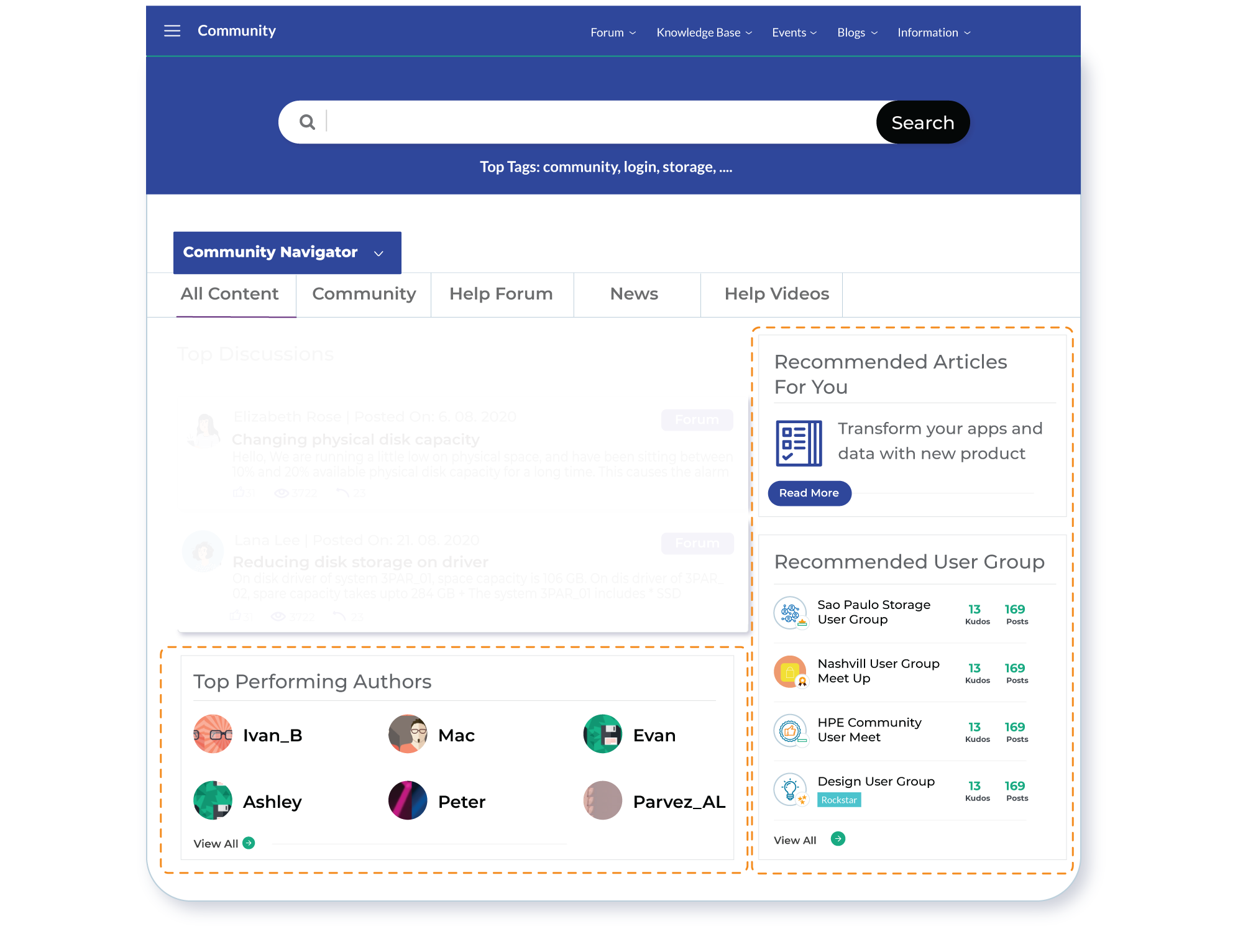
You can relate this well with Netflix. When you arrive on this virtual content community, it recommends shows based on your geography and viewing history. Of course, there are more factors but you get the drift, right?
2. Streamlined Intuitive Community Search
Cognitive search can help complete the query for your community members. This doesn’t just save a few keystrokes but also reduces customer effort. AI and NLU supported auto‑complete suggestions are relevant as they are personalized based on every user’s history.
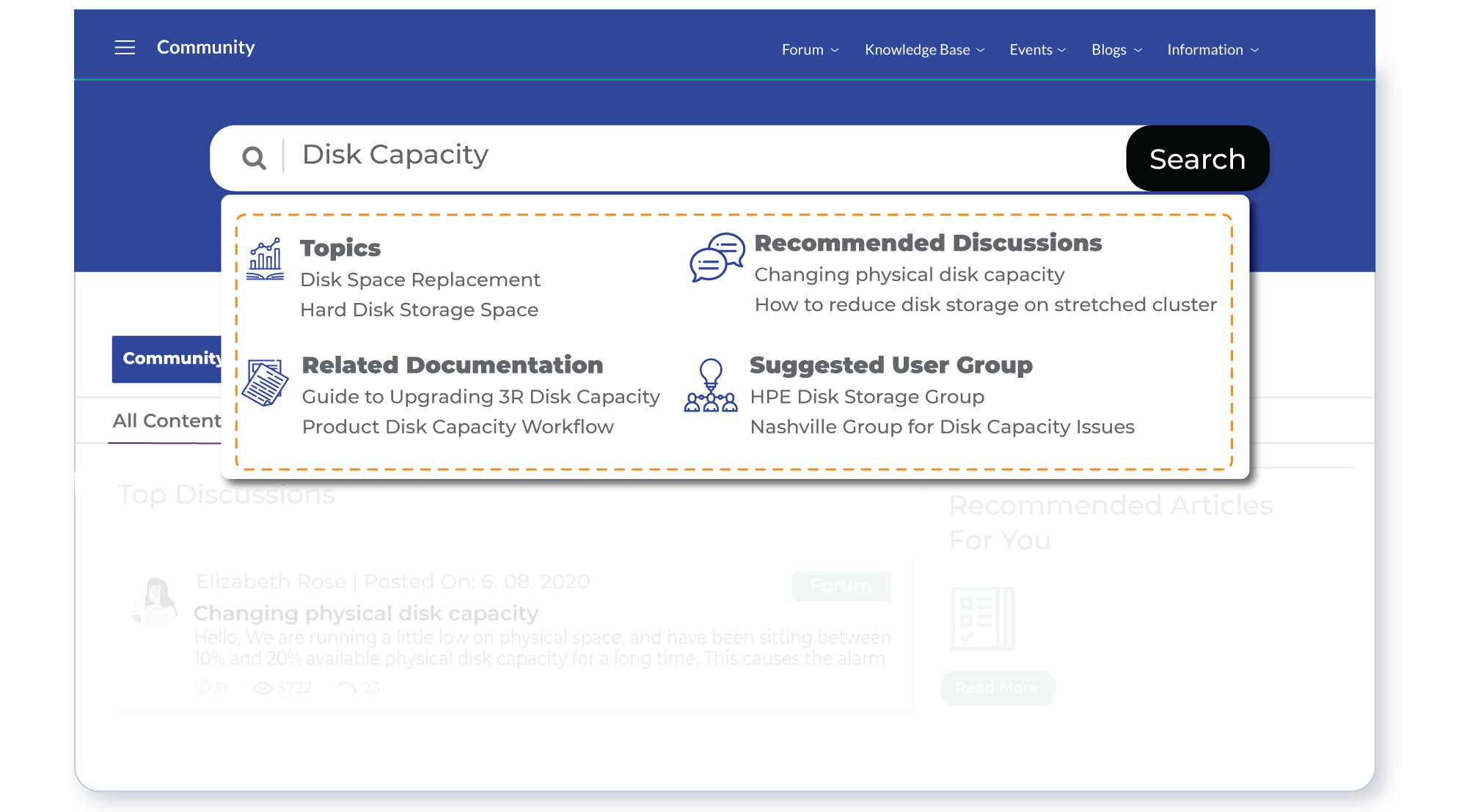
It also picks top suggestions from the user groups, blogs, FAQ’s and displays them in the search bar to offer a seamless UX. Let us pick our Netflix analogy again here. When you start typing in the name of a movie or show, you see a litany of suggestions having similar names and genres. This gives you plenty of options to choose from.
3. Relevance‑Imbibed Recommendations
AI‑powered search engines can be trained to learn and add multiple synonyms, abbreviations for a keyword or even a phrase. This helps the engine to understand what is being searched for by considering the permutations and combinations of a question or query.
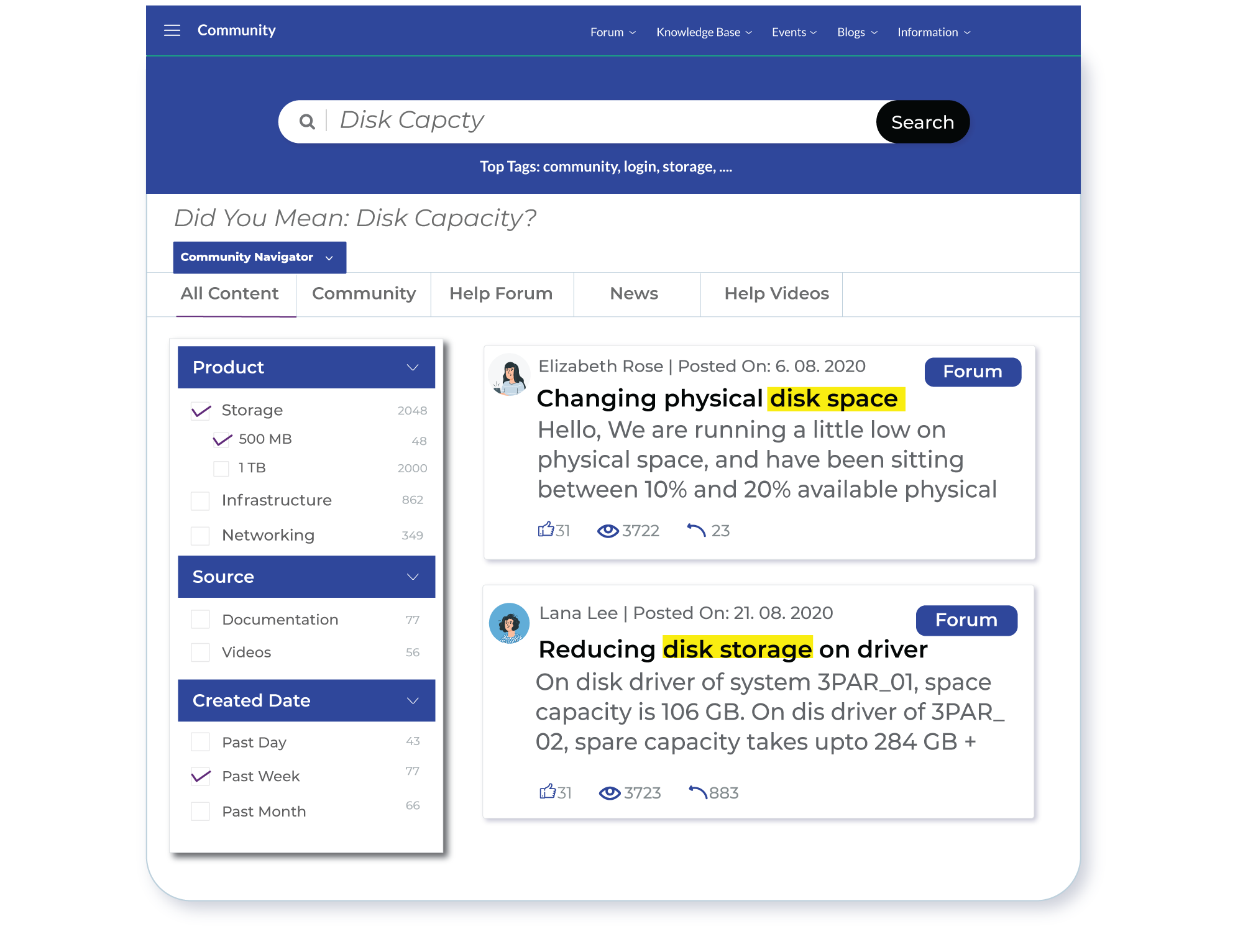
The search bar can also offer proactive contextual suggestions using the spell check and ‘did you mean’ options. This way, your search box can provide apt results and deflect the L1 cases immediately without the customer stressing to explain what they are searching for.
4. Facets‑Driven Interface for Better Discovery
Adding facets to the interface can help the users to filter their search. Online shopping is a great example where facets are generously used to narrow down search results. They are a godsend when it comes to finding exactly what you need.
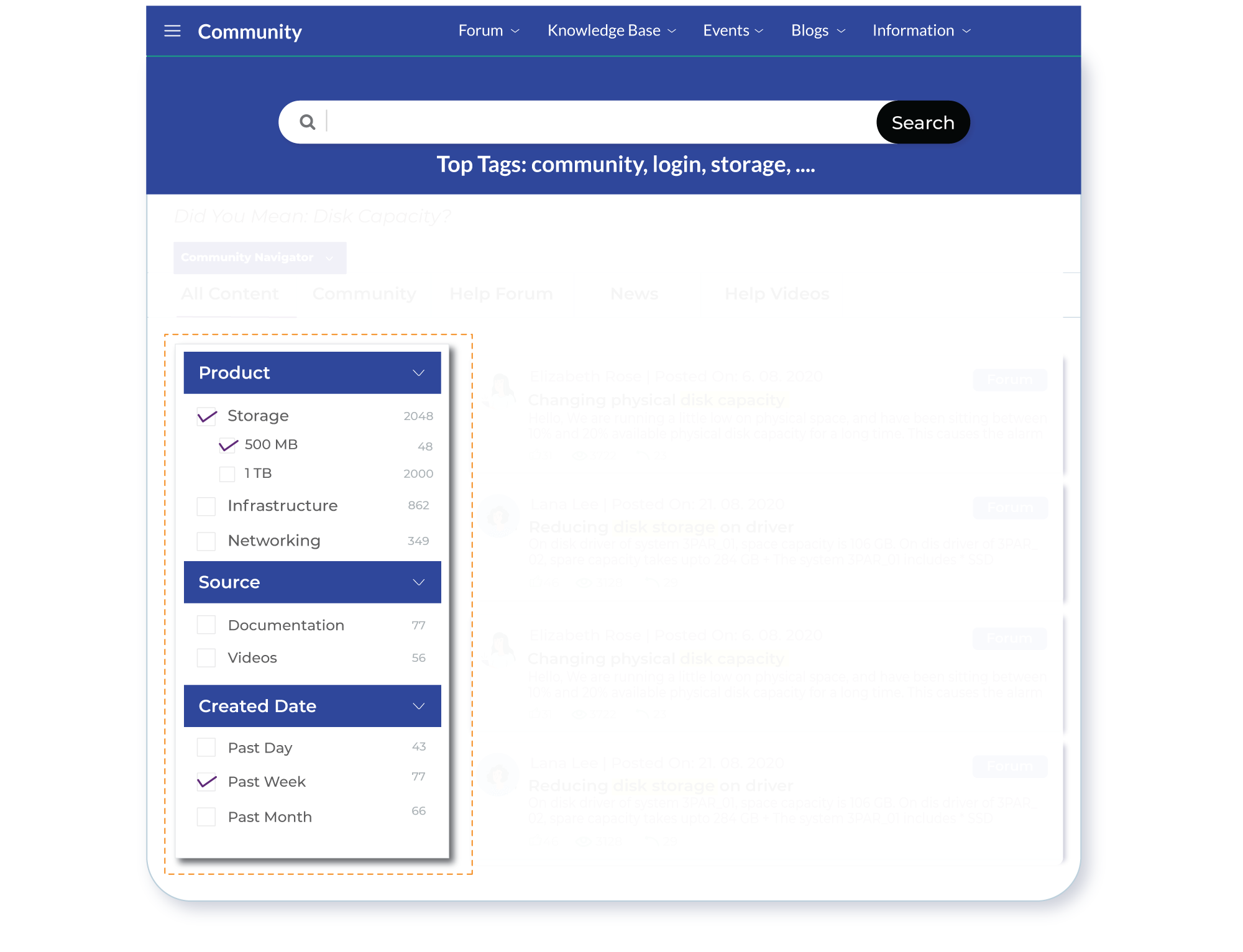
ML and NLU deciphers the user intent and auto‑selects facets using the search query and past user behavior as base. The interface can also deliver rich snippets by analyzing the query and extrapolating a succinct answer right on the results page for quick consumption.
5. Augmented Chatbot Interactions
“Alexa, what is the weather forecast for the day?”. “It’s going to rain the whole day, you might want to carry your umbrella along with you when you leave for work today.”
Virtual assistants are a powerful product of AI. But when built on a cognitive search framework, they reach an altogether different level. These cognitively‑enabled assistants can understand the context of the query and access enterprise‑wide knowledge repository to provide personalized and relevant recommendations and responses.
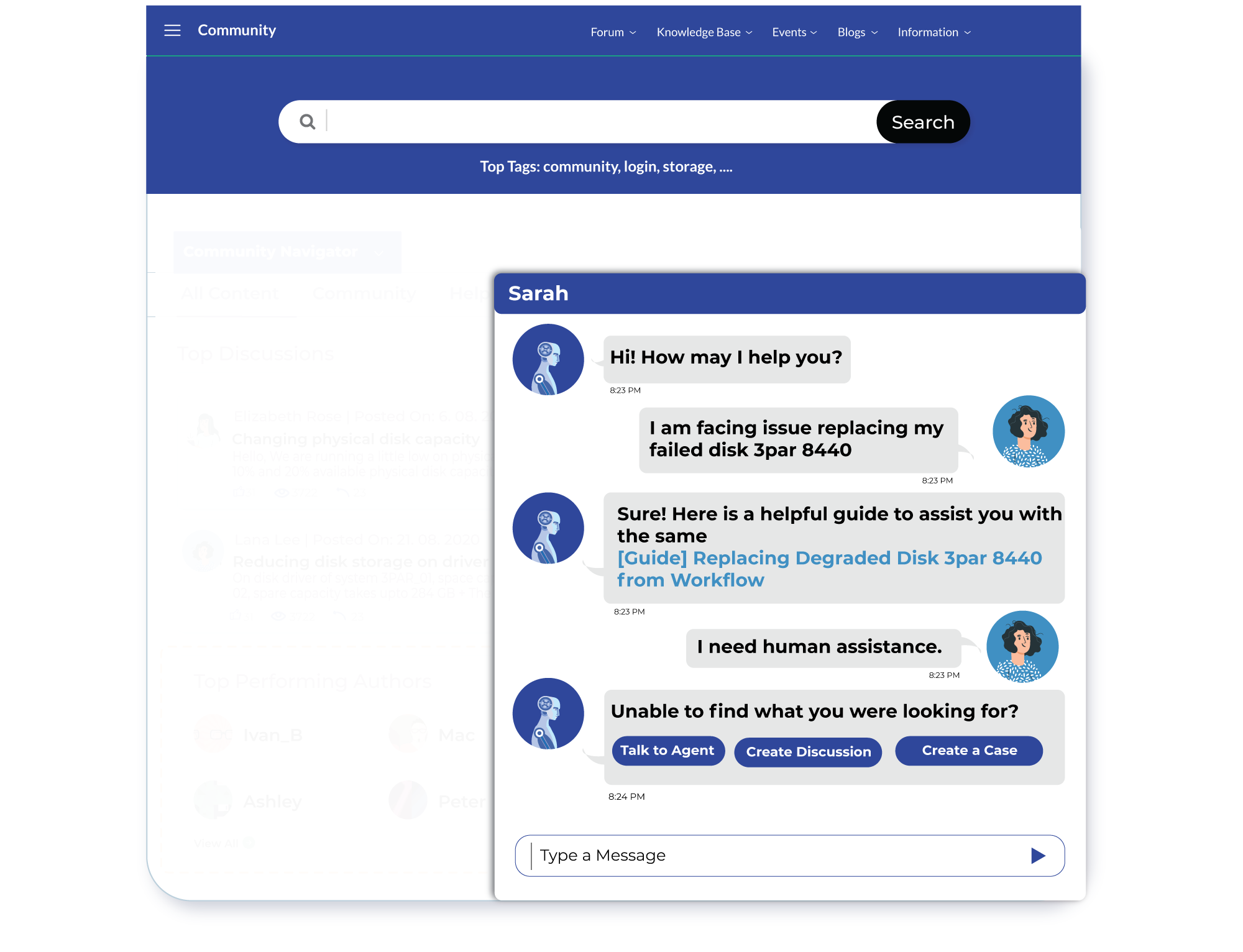
Along with this, they also offer seamless handoffs to the live agents, create new conversations or discussions on the community, raise tickets for an unresolved query – all through a chat window and the bits and pieces that the user has left behind.
6. Heightened Engagement & Self‑Service
Some cognitive search solutions come with applications like Community Helper. They keep a tab on new discussions and threads to offer meaningful and sentiment adaptive auto‑responses round the clock, ensuring that no discussion goes unanswered.
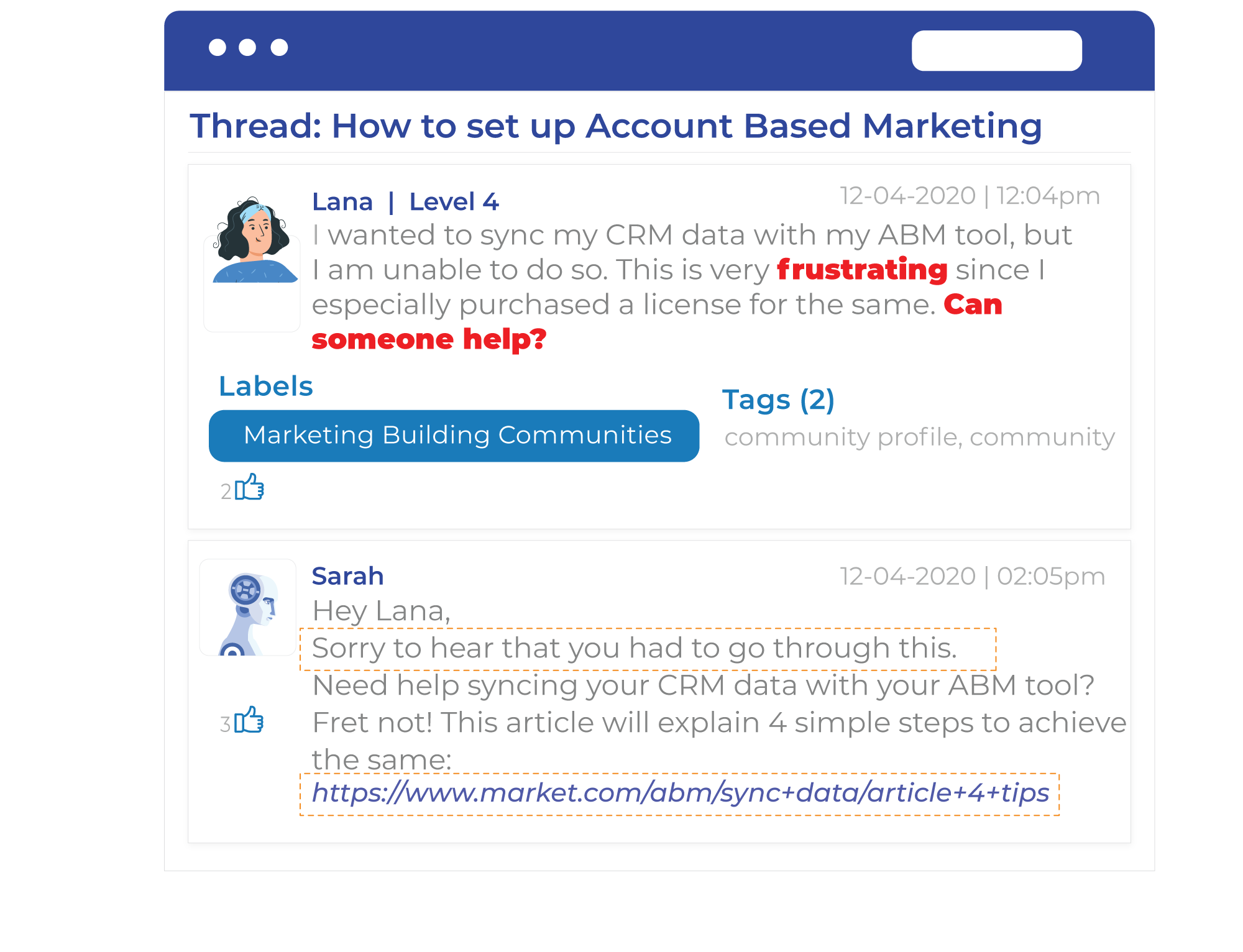
Community Helper zeroes‑in on the entity and intent and then uses Natural Language Generation (NLG) to tailor an apt response. It can also identify and merge all duplicate threads. In case it is unable to find a suitable response, it redirects the question to a community champion with demonstrated expertise on the matter.
7. Ingrained Deflection Component
In case nothing works and the community member still doesn’t have an answer, the engine makes the last‑ditch attempt to recommend helpful content as the user is about to create a ticket.
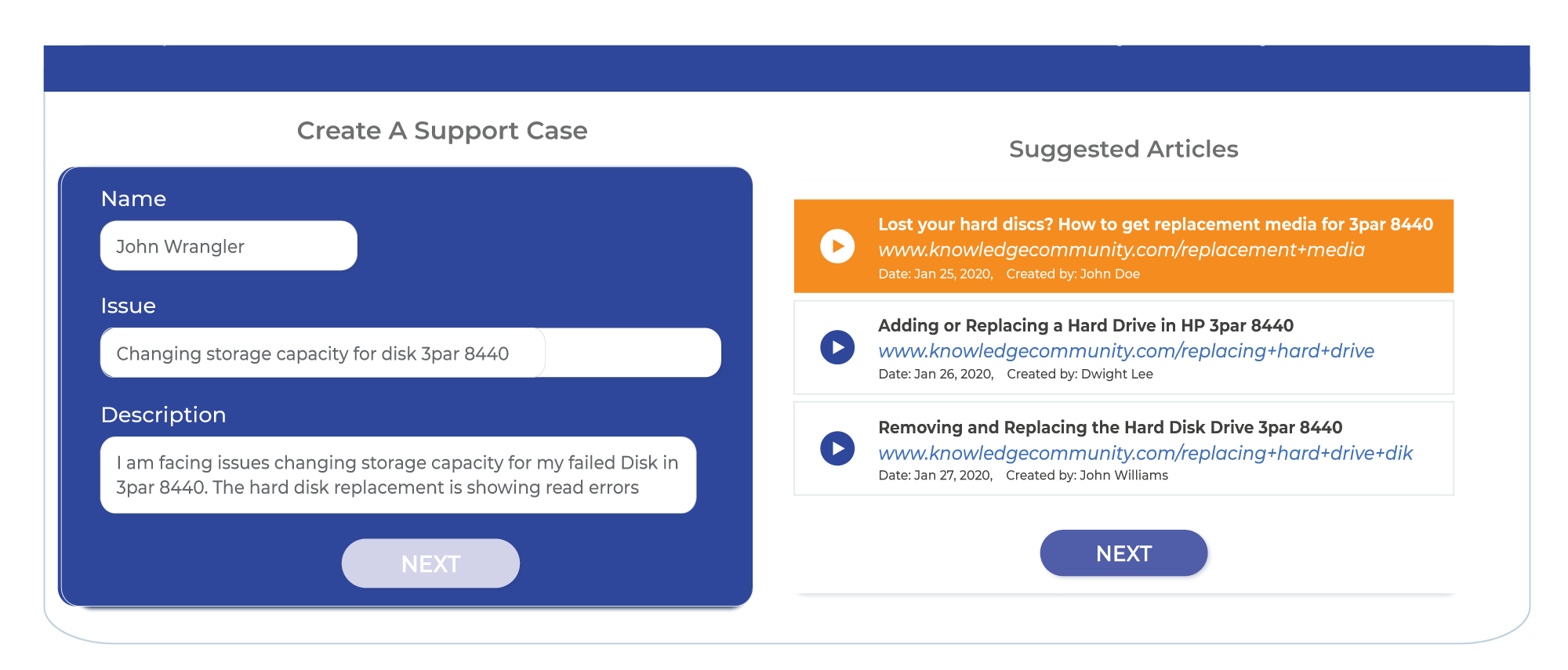
Here, the engine uses AI and ML to understand the issue and provide suggestions that have worked in the past to resolve similar cases. This is particularly beneficial to deflect tickets from users who don’t check the community at all.
Ready to Take Your Community Experience to a Higher Echelon?
The communities can build engagement and make the user experience better for your customers. This not only helps customers to find help for themselves, but it also eases out the effort on the end of support agents. For a detailed understanding how SearchUnify offers a user interface that can enhance your community experience, refer to our E‑Book here.




